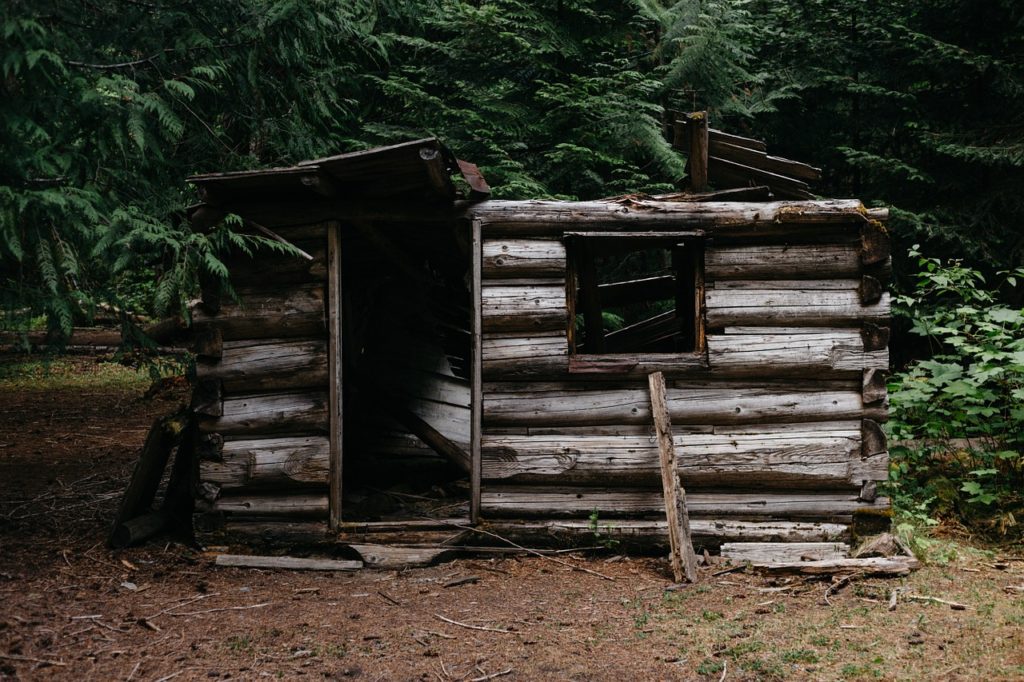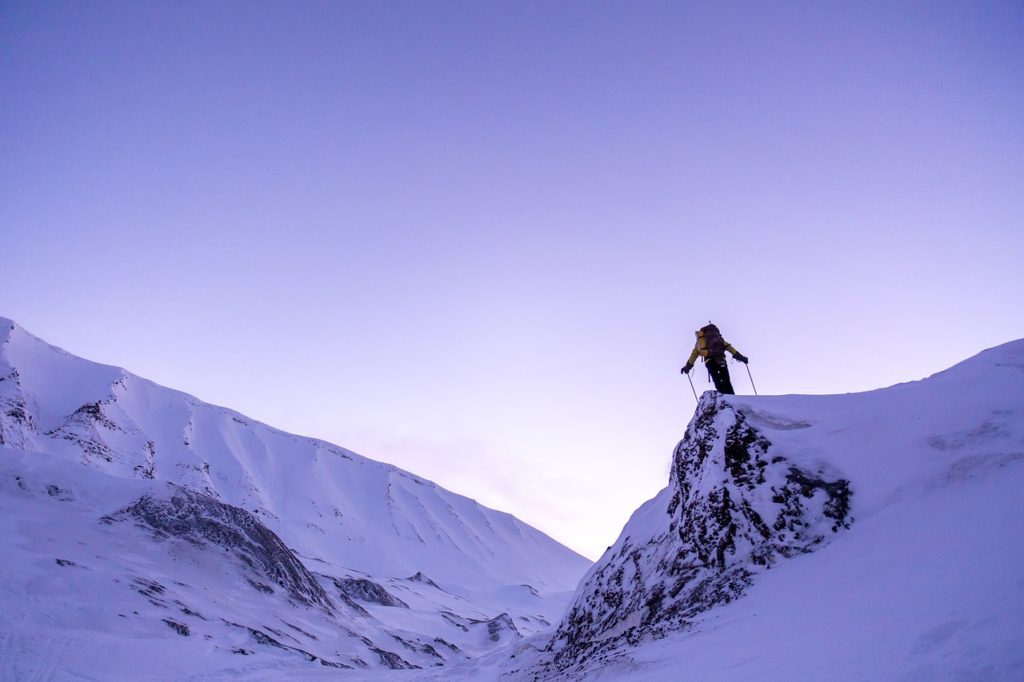Mountains come in many shapes and sizes, so let’s be clear here: we’re not talking about the summer you spent camping in the Catskills. We’re talking about being stranded in the Rockies, somewhere near the timberline, with a storm on the horizon.
Mountain survival means you’ll face blizzards, freezing nights, steep elevation, and difficult foraging.
This is something that would kill most people. In all honesty, it’ll probably kill you, too. But there’s a reason why we learn survival skills — so that it will maybe not.
So stay optimistic! If you find yourself lost, these mountain survival skills will help you get out alive.
Stay Warm
When you’re fighting for survival in a snowy landscape, staying warm will be your biggest challenge.
When traveling, take frequent breaks to avoid excessive sweating. It may feel nice to work up a sweat during the day, but that sweat will freeze come nighttime. Staying dry is the only way to stay warm.
If you sweat excessively on an everyday basis, you might want to gradually work up to that big trip in the mountains. (And check in with a cardiologist …)
Melt snow in your bottle before consuming it. The energy your body uses to thaw the snow is too valuable to sacrifice.
To make a fire, look for tinder you can break off of trees that isn’t dampened by snow. If you can, it’s worth packing emergency tinder so you can get a fire going with damp materials. Consider bringing effigies of people you hate to couple survival skills with an important boost in morale.

A Cabin in the Woods
Find Shelter
When night falls, a good shelter is non-negotiable. If you have a tent, construct a snow wall behind it to shield yourself from the wind.
A snow cave is another great way to stay warm … or at least not frozen. Make sure you dig it properly so you don’t suffer from a cave-in, and make it small enough to insulate you properly.
In a dire emergency, you can make a bivouac. Dig a hole in the snow and cover the top with a tarp or blanket. Then spend the night desperately hoping to catch a glimpse of sunrise.
Prepare for Storms
The key to preparing for a storm is knowing when one will hit you. Winter storms tend to be preceded by a noticeable drop in barometric pressure (a good outdoor watch automatically keeps an eye on this for you). This causes shifting winds, an eerie quiet, and erratic animal behavior. Rapidly falling snow is another sign of a blizzard, but one that will prove far less helpful.
Keep an eye on the sky, as well. By tracking the direction of cloud movement and checking for storm clouds, you can give yourself a decent amount of warning.
Once you know a storm is coming, prepare a shelter. Stock up whatever supplies and tinder you can, and get ready to hunker down for several days if need be.

Mountain Hiking
Travel Efficiently
You won’t make it far in the snow without the proper traveling equipment. A pair of snowshoes will more than double your speed.
To make snowshoes, find a couple of pliable saplings. Bend them into ovals and tie off the saplings where they meet. Weave smaller branches or twigs through to complete them.
The key is making your snowshoes large enough to distribute your weight. The average person will need them to be at least two and a half feet long. (If you are actually a giant and are over 15 feet high, congratulations on finding your way to a website for tiny people! Unfortunately, we can’t tell you exactly how big your snowshoes should be.)
Another useful survival skill when traveling is avoiding being crushed to death beneath a monstrous wall of falling ice, rocks, and snow.
To avoid an avalanche, wait a day or two before traveling on freshly fallen snow. Stay away from steep slopes and areas sparse of trees. If you are forced to cross something that looks dangerous, choose a high path so you’ll be near the surface of the debris in case of collapse. And if you see a 15-foot giant in stomping around in a huge pair of snowshoes, head the other way.
Get the Hell Out of There
None of these survival skills will do you any good if you can’t get off the mountain. Life feels pretty empty without Taco Bell and reruns of Married … With Children.
Find a stream. It will invariably lead you down the mountain, and will grow into a river that gives you higher likelihood of coming across somewhere inhabited.
Divert your path when you need to &emdash; don’t try to climb down a waterfall like some misguided reality TV star. Keep moving down the mountain and eventually, you’ll reach warmer climates and (hopefully) a way home.